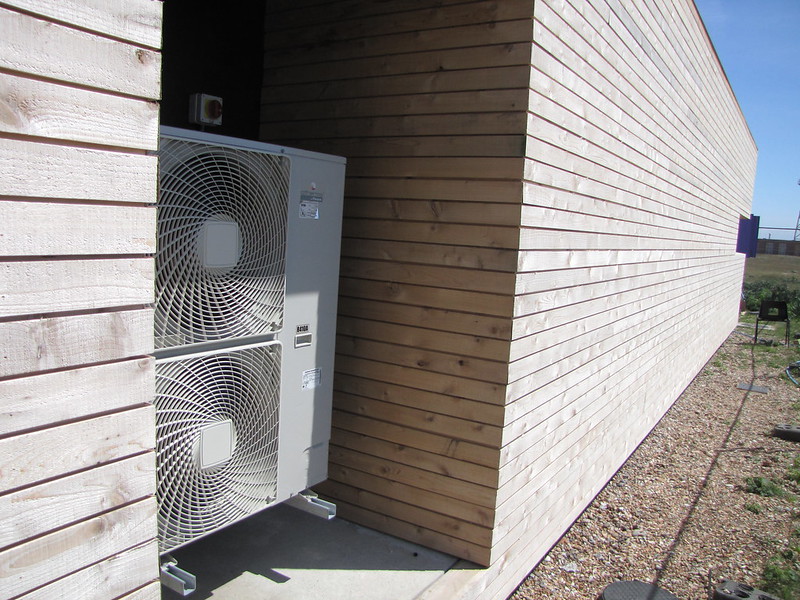An air source heat pump can run continuously under certain conditions, and this does not necessarily indicate a problem. When temperatures drop below 40 degrees Fahrenheit, the heat pump may run almost constantly to maintain a comfortable indoor temperature. This is because the heat pump is designed to work harder in colder weather to extract heat from the outside air and transfer it indoors.
Correct Thermostat Settings
One of the most common reasons for an air source heat pump running continuously is incorrect thermostat settings. Setting the thermostat too high in the winter or too low in the summer can cause the heat pump to work overtime to maintain the desired temperature.
To ensure the thermostat is set correctly, follow these steps:
- Check the manufacturer’s recommended temperature settings for your specific heat pump model.
- Use a digital thermometer to verify the temperature in the room where the thermostat is located.
- Adjust the thermostat to the recommended setting and allow the heat pump to cycle on and off as needed.
- Monitor the temperature in the room to ensure the heat pump is maintaining the desired comfort level.
- If the heat pump continues to run continuously, even with the thermostat set correctly, further investigation may be required.
Dirty Air Filters
Clogged air filters can restrict airflow, causing the heat pump to work harder and run longer than necessary. Over time, dust, debris, and pet hair can accumulate on the air filters, reducing their efficiency.
To address this issue:
- Locate the air filters in your heat pump system, typically found in the indoor unit or ductwork.
- Inspect the filters and determine if they need cleaning or replacement.
- Use a vacuum cleaner or compressed air to remove any visible dirt and debris from the filters.
- If the filters are heavily soiled or damaged, replace them with new, high-quality filters.
- Set a regular schedule for cleaning or replacing the air filters, typically every 1-3 months, depending on the usage and environment.
Faulty Components
Malfunctioning components, such as a broken compressor or a faulty reversing valve, can cause the heat pump to run continuously. These issues can be more complex to diagnose and may require the expertise of a professional HVAC technician.
Some signs of faulty components include:
- Unusual noises or vibrations coming from the heat pump
- Reduced heating or cooling performance
- Frequent cycling on and off
- Tripped circuit breakers or blown fuses
If you suspect a component failure, it’s best to have a qualified technician inspect the system and make any necessary repairs or replacements.
Refrigerant Leaks
Low refrigerant levels due to leaks can cause the heat pump to run continuously as it struggles to maintain the desired temperature. Refrigerant leaks can be difficult to detect, as they may not always be visible.
To check for refrigerant leaks:
- Visually inspect the refrigerant lines and connections for any signs of damage or wear.
- Use a refrigerant leak detector to scan the system for any potential leaks.
- If a leak is detected, have a professional HVAC technician repair the leak and recharge the system with the proper refrigerant amount.
Attempting to recharge the system yourself is not recommended, as it requires specialized tools and knowledge to ensure the system is properly charged.
Poor Insulation
Inadequate insulation in the home can cause heat to escape, forcing the heat pump to work harder and run longer to compensate. This can lead to higher energy bills and decreased efficiency.
To address poor insulation:
- Inspect the insulation in your home, particularly in the attic, walls, and crawl spaces.
- Identify any areas where the insulation is missing, thin, or damaged.
- Consult with a professional insulation contractor to determine the appropriate type and amount of insulation needed to improve the home’s thermal efficiency.
- Ensure that any air leaks around windows, doors, and other openings are properly sealed to prevent heat loss.
By addressing these common issues, you can help ensure your air source heat pump operates efficiently and only runs when necessary to maintain your desired indoor comfort level.
Conclusion
In conclusion, an air source heat pump can run continuously under certain conditions, such as when temperatures drop below 40 degrees Fahrenheit. However, if the heat pump is running continuously even when the temperature is above 40 degrees, it could be a sign of an issue.
To determine the cause of a continuously running heat pump, it’s essential to inspect the thermostat controls, check the outdoor unit for ice or frost, and look at the evaporator coil for dirt or corrosion. If the heat pump is still running continuously after these inspections, it’s recommended to consult a professional HVAC technician for further evaluation and potential repairs.
By understanding the common causes of a continuously running heat pump and taking the necessary steps to address them, you can ensure your system operates efficiently and effectively, providing you with the desired indoor comfort while minimizing energy consumption and costs.

